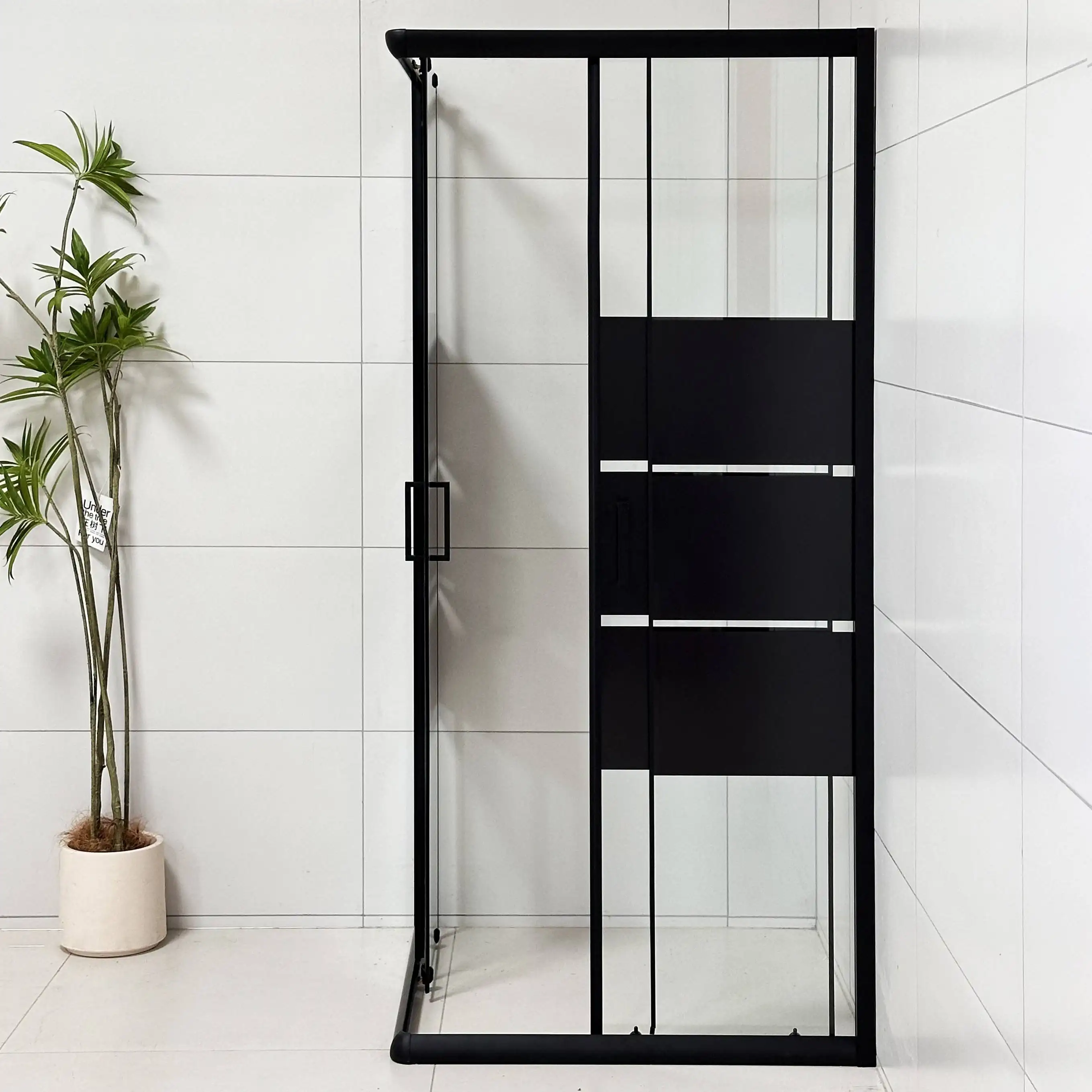راهنمای ضروری نصب درهای شیشهای سریع
نصب درب های شیشه ای کشاندنی گامی کلیدی در بهبود عملکرد و جذابیت بصری فضای شما است، چه در آشپزخانه و چه در حمام خانه درهای سریع بهدرستی انتخابشده و نصبشده نهتنها دسترسی و نور طبیعی را بهبود میبخشند، بلکه امنیت و قابلیت اطمینان بلندمدت را نیز فراهم میکنند. شرکت JiuJiang HOKO Sanitary Ware CO., LTD، تولیدکننده حرفهای اتاقهای دوش و درهای حمام لوکس، به مواد باکیفیت، مهندسی دقیق و طراحیهای کاربرپسند اهمیت میدهد. تمرکز این شرکت بر استانداردهای بینالمللی و مجموعه گسترده محصولات تضمین میکند که هر نصب در شیشهای معیارهای سختگیرانه ایمنی و عملکرد را برآورده کند.
انتخاب شیشه مناسب
انتخاب نوع شیشه مناسب
نوع شیشه برای درهای سُرخورش بسیار مهم است. شیشه مقوایی دوام عالی دارد و در صورت شکستن به تکههای کوچکی تقسیم میشود که خطر آسیب را به حداقل میرساند. شیشه لایهای با یک لایه میانی داخلی، ایمنی بالاتری فراهم میکند و احتمال شکستن را کاهش داده و سطحی از امنیت را نیز اضافه میکند. درهای حمام هوکو اغلب از شیشه لایهای یا مقوایی استفاده میکنند تا دوام، پایداری و انطباق با استانداردهای CE، GS و SGS را تضمین کنند.
تعیین ضخامت شیشه
ضخامت شیشه هم بر ایمنی و هم بر پایداری ساختاری تأثیر میگذارد. صفحات ضخیمتر در برابر خمش و نیروهای خارجی مقاومت بیشتری دارند و برای درهای بزرگ حیاط یا فضاهای بسته حمام ایدهآل هستند. برای اتاقهای دوش، ضخامت مناسب تضمین میکند که شیشه در طول استفاده روزمره پایدار بماند و مکانیسمهای سنگین سُرخورش را بدون به خطر انداختن ایمنی یا طراحی پشتیبانی کند.
ماده و ساختار قاب
انتخاب مواد بادوام برای قاب
قابها نقش مهمی در عملکرد درهای شیشهای سرخور دارند. قابهای آلومینیومی و uPVC تقویتشده مقاومت در برابر خوردگی، استحکام و نیاز به نگهداری بسیار کمی فراهم میکنند. این مواد با حفظ تراز و کاهش پیچش در طول زمان، عمر مفید درب را افزایش میدهند. قابهای باکیفیت HOKO طول عمر درهای شیشهای سرخور مسکونی و کابینهای حمام را افزایش داده و عملکردی روان و ایمن را فراهم میکنند.
گوشههای تقویتشده و ساختار
گوشهها و اتصالات بهدرستی تقویتشده، چارچوب درب را محکمتر کرده و مقاومت آن در برابر تنش و ضربه را افزایش میدهند. برای درهای خارجی و کابینهای دوش لوکس، ساختار محکم ایمنی را تضمین میکند، سایش را کاهش میدهد و ظاهری تمیز و منظم را در طول سالها استفاده حفظ میکند. فرآیندهای دقیق تولید HOKO بر یکپارچگی قوی قاب تأکید دارند تا عملکرد برتر محصول تضمین شود.

مکانیزمهای قفل و ایمنی
سیستم های قفل چند نقطه ای
قفلهای چندنقطهای دربهای سُرخور را در چندین نقطه در طول قاب محکم میکنند و از این طریق ایمنی و پایداری را بهبود میبخشند. این ویژگی برای دربهای خارجی و کابینههای سُرخور حمام که ایمنی در اولویت است، بسیار مهم میباشد. هوکو مکانیزمهای قفل باکیفیت بالایی را ادغام کرده است که استفاده آسان را تضمین میکند و در عین حال از دسترسی غیرمجاز جلوگیری میکند.
ویژگیهای ایمنی مدرن
دربهای سُرخور پیشرفته میتوانند دارای سیستمهای قفل هوشمند یا ویژگیهای الکترونیکی ایمنی باشند تا راحتی بیشتری فراهم کنند. این سیستمها امکان نظارت از راه دور و کنترل دسترسی را فراهم میآورند. دربهای سُرخور و حمام هوکو به گونهای طراحی شدهاند که با راهکارهای مدرن ایمنی سازگار باشند و در عین حال عملکردی روان و دوام بالا ارائه دهند.
کیفیت ریل و غلتک
ریلهای دقیق برای عملکرد روان
دربهای سُرخور به ریلهای باکیفیت بالا متکی هستند تا بدون نیروی زیاد حرکت کنند و از عدم تراز شدن جلوگیری شود. ریلهای مجهز به مکانیزم ضد بلندشدن، در برابر نفوذ از طریق نیروی بیرونی محافظت میکنند و درنتیجه دربها ایمنتر میشوند. ریلهایی با طراحی مناسب عمر تختههای شیشهای و قطعات مکانیکی را افزایش میدهند.
نگهداری و طول عمر
نگهداری دورهای، از جمله تمیز کردن و روغنکاری ریلها، برای حفظ عملکرد روان ضروری است. دربهای سریعالسیر و کابین دوش هوکو به گونهای طراحی شدهاند که نگهداری آنها آسان باشد و عملکرد مداوم را تضمین کرده و از فرسودگی در طول زمان جلوگیری میکند. مراقبت منظم باعث میشود دربها هم از نظر عملکردی و هم از نظر ظاهری سالم بمانند.
یکپارچگی زیبایی شناختی و عملکردی
هماهنگی طراحی خانه و حمام
دربهای شیشهای سریعالسیر نور طبیعی را افزایش داده و حس گستردگی فضا را ایجاد میکنند. انتخاب طرحهایی که با دکوراسیون داخلی هماهنگ باشند، به فضای کلی بخشیده میشود. دربهای حمام و کابین دوش هوکو ترکیبی از کارایی و طراحی مدرن هستند که به راحتی با طرحهای معاصر خانه ادغام میشوند.
بهینهسازی فضا و دسترسی
درهای سُرخور برای فضاهایی با محدودیت فضا ایدهآل هستند، زیرا به فضای بازشدن نیازی ندارند. برای حمامها و کابین دوش، این ویژگی دسترسی مناسب و استفاده کارآمد از فضا را فراهم میکند. محصولات هوکو به گونهای طراحی شدهاند که حرکتی روان و عملکردی قابل اعتماد را همراه با ظاهری شیک فراهم کنند.
سوالات متداول
چه نوع شیشهای برای درهای سُرخور توصیه میشود
شیشه مقوایی یا لایهای ایمنی و دوام مناسبی را تضمین میکند. شیشه لایهای امنیت بیشتری ایجاد میکند، در حالی که شیشه مقوایی خطر آسیب را در صورت شکستن کاهش میدهد. انتخاب نوع مناسب، عملکرد بلندمدت را برای درهای خارجی و کابینهای حمام تضمین میکند.
چگونه میتوان امنیت درهای سُرخور را بهبود بخشید
نصب قفلهای چندنقطهای، قابهای تقویتشده و مکانیزمهای مسیری ضد بالارفت، امنیت درب را افزایش میدهد. ادغام قفلهای هوشمند کنترل بیشتر و آرامش خاطر اضافی را فراهم میکند.
چه روشهای نگهداریای برای درهای سُرخور مهم هستند
تمیزکاری منظم، روغنکاری ریلها و بازرسی مکانیزمهای قفل بسیار ضروری است. نگهداری صحیح عملکرد روان را حفظ کرده، طول عمر سیستم را افزایش میدهد و ویژگیهای ایمنی را در طول زمان حفظ میکند.
چرا باید یک تولیدکننده حرفهای را برای دریچههای سرخریز انتخاب کرد
شرکتی مانند جیوجیانگ هوکو اطمینان از شیشه با کیفیت بالا، چارچوبهای مقاوم و تجهیزات مطمئن را فراهم میکند. تخصص آنها در دیوارههای حمام و درهای سرخورشیدی، محصولاتی ایمن، شیک و بادوام را ارائه میدهد و پشتیبانی قبل و بعد از فروش برای آرامش خاطر مشتری فراهم میکند.

